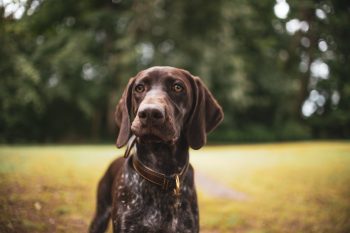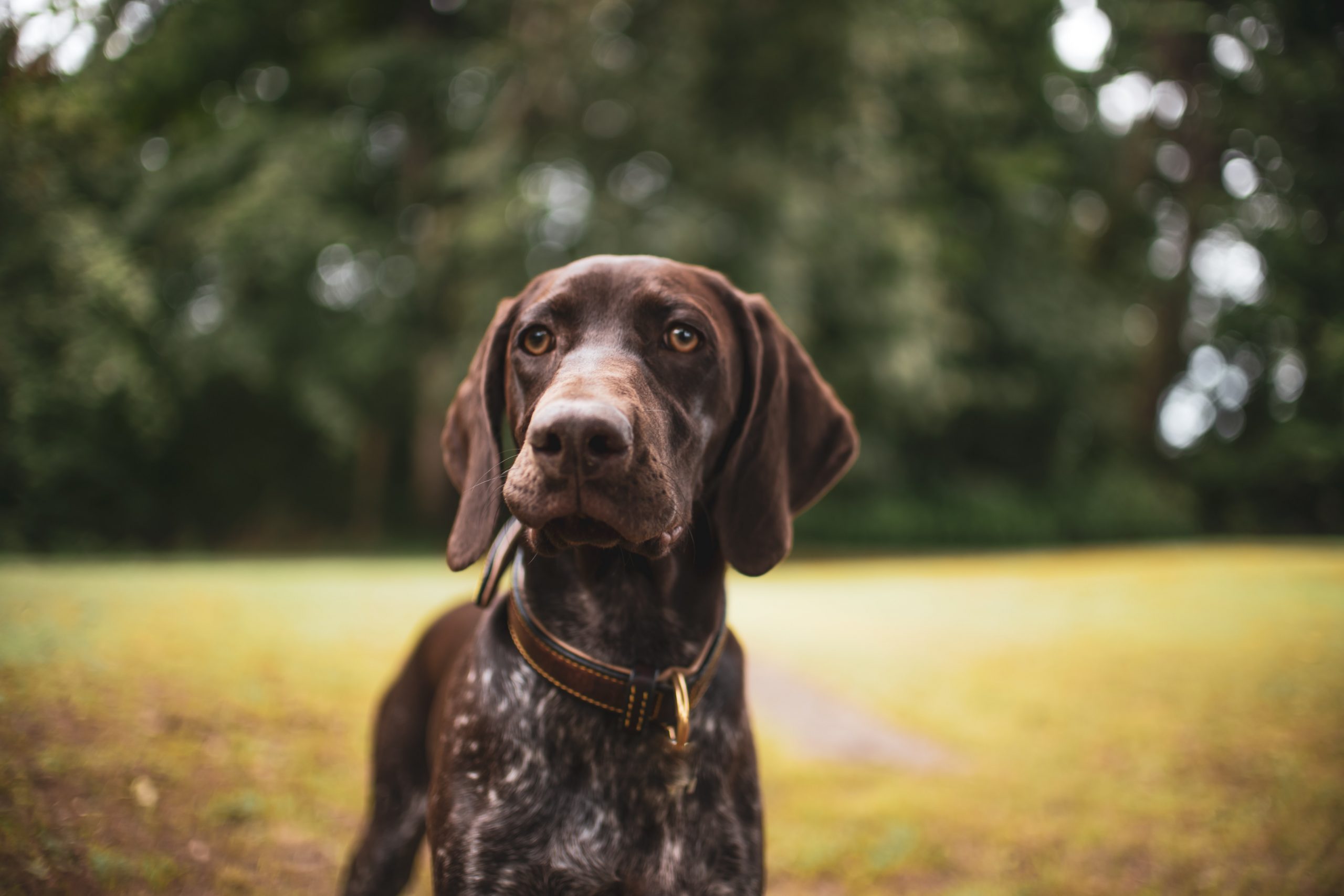
The German Shorthaired Pointer, celebrated for its versatility as a hunting dog and cherished as a family companion, undergoes significant growth in its formative months. New owners and breed enthusiasts often find themselves questioning whether their puppy’s development aligns with standard benchmarks. A thorough understanding of the average weights and heights of German Shorthaired Pointer puppies can be invaluable in ensuring they’re on a healthy growth trajectory. This article provides a comprehensive guide to these growth milestones, offering clarity for owners keen on monitoring their puppy’s development.
 Male German Shorthaired Pointer Weights & Heights by Age
Male German Shorthaired Pointer Weights & Heights by Age
The following chart contains the average weights and heights of male German Shorthaired Pointer from newborn to 3 years of age. Please note these are only averages. Always consult with your veterinarian if you have any concerns about your German Shorthaired Pointer’s growth.
| Age | Weight (pounds) | Weight (kg) | Height (inches) | Height (cm) |
|---|---|---|---|---|
| Newborn | 1-1.5 | 0.45-0.68 | N/A | N/A |
| 1 month | 5-10 | 2.3-4.5 | 4-6 | 10-15 |
| 2 months | 15-20 | 6.8-9 | 8-11 | 20-28 |
| 3 months | 20-30 | 9-13.6 | 11-14 | 28-35.5 |
| 4 months | 30-40 | 13.6-18 | 14-17 | 35.5-43 |
| 6 months | 45-55 | 20.4-25 | 18-21 | 45.5-53 |
| 8 months | 50-65 | 22.7-29.5 | 20-24 | 51-61 |
| 10 months | 55-70 | 25-31.8 | 22-25 | 56-63.5 |
| 12 months | 60-75 | 27.2-34 | 23-26 | 58.5-66 |
| 2 years | 65-80 | 29.5-36.3 | 24-27 | 61-68.5 |
| 3 years | 65-80 | 29.5-36.3 | 24-27 | 61-68.5 |
Female German Shorthaired Pointer Weights & Heights by Age
The following chart contains the average weights and heights of female German Shorthaired Pointer from newborn to 3 years of age. Please note these are only averages. Always consult with your veterinarian if you have any concerns about your German Shorthaired Pointer’s growth.
| Age | Weight (pounds) | Weight (kg) | Height (inches) | Height (cm) |
|---|---|---|---|---|
| Newborn | 0.75-1.25 | 0.34-0.57 | N/A | N/A |
| 1 month | 4-9 | 1.8-4.1 | 3-5 | 7.5-12.7 |
| 2 months | 13-18 | 5.9-8.2 | 7-10 | 17.8-25.4 |
| 3 months | 18-27 | 8.2-12.2 | 10-13 | 25.4-33 |
| 4 months | 27-37 | 12.2-16.8 | 13-16 | 33-40.6 |
| 6 months | 40-50 | 18-22.7 | 16-19 | 40.6-48.3 |
| 8 months | 45-60 | 20.4-27.2 | 18-22 | 45.7-56 |
| 10 months | 50-65 | 22.7-29.5 | 20-23 | 51-58.4 |
| 12 months | 55-70 | 25-31.8 | 21-24 | 53.3-61 |
| 2 years | 55-73 | 25-33.1 | 22-25 | 56-63.5 |
| 3 years | 55-73 | 25-33.1 | 22-25 | 56-63.5 |
These tables are based on general guidelines and can vary greatly depending on individual dogs. Always consult with a veterinarian or professional breeder for more specific information about your pet’s growth and development.
FAQs about a German Shorthaired Pointer Puppy’s Growth and Development
1. How large will my German Shorthaired Pointer (GSP) grow as an adult?
Adult male GSPs typically weigh between 65-80 pounds and stand 24-27 inches tall, while females usually weigh between 55-73 pounds and are 21-25 inches in height. However, individual growth can vary based on genetics and overall health.
2. When will my GSP puppy stop growing?
Most GSPs will reach their full height around 12-15 months of age but can continue to fill out, gaining weight and muscle mass, until they’re around 2 to 2.5 years old.
3. What should I feed my GSP puppy for healthy growth?
High-quality puppy food that’s rich in proteins and specifically formulated for large breeds will ensure balanced growth. Adjust portions based on activity levels and always monitor for healthy weight.
4. How often should a GSP puppy be fed?
Young puppies should be fed 3 to 4 times daily until six months of age. After that, you can transition to feeding twice daily.
5. Are there specific growth-related health concerns for GSPs?
GSPs can be prone to hip dysplasia. Feeding an appropriate diet and preventing excessive strain on their joints as puppies can help reduce the risk.
6. Why does my GSP puppy seem so lean?
GSPs are naturally athletic and lean, especially during their growth spurts. As long as your puppy is eating well and vet checks are normal, a lean physique is typical for the breed.
7. When should I start training and socializing my GSP puppy?
Early socialization and training, starting from a few weeks old, are crucial. GSPs are intelligent and active; early training helps channel their energy positively.
8. How much exercise does a GSP puppy need?
While they’re energetic, over-exercising during growth can strain their joints. Short, frequent play sessions are best for young puppies, increasing in duration as they age.
9. Why are my GSP puppy’s ears so large compared to its body?
Puppies often grow in spurts, with some features growing faster than others. Your GSP’s ears will become more proportionate as it matures.
10. How do I ensure my GSP grows into a well-mannered dog?
Consistent training, firm boundaries, and ample exercise will help channel your GSP’s natural instincts and energy into positive behaviors.
11. Are GSPs late bloomers compared to other breeds?
While GSPs grow at a pace similar to other large breeds, they might seem lean and lanky during adolescence before filling out in adulthood.
12. Can I take my GSP puppy on long hikes?
While they’re bred for stamina, long hikes can be hard on a young GSP’s developing joints. Shorter hikes with rest breaks are advisable until they’re fully grown.
13. Should I be concerned if my GSP puppy sleeps a lot?
Puppies, like human babies, require a lot of sleep for growth and development. It’s normal for your GSP puppy to have multiple naps throughout the day.
14. When will my GSP puppy’s coat develop its final color and texture?
Your GSP’s coat color might change subtly as they mature. The full texture and color are usually set by 12-18 months.
15. How can I ensure my GSP puppy has strong bones and joints?
A balanced diet rich in calcium and phosphorus, coupled with appropriate exercise and regular vet check-ups, will help ensure healthy bone and joint development.
16. My GSP puppy seems hyperactive. Is this normal?
GSPs are known for their high energy. Regular play, training, and mental stimulation will help manage and channel their active nature.
17. Why is my GSP puppy so mouthy?
Most puppies go through a “mouthy” phase, especially during teething. Offering chew toys and teaching bite inhibition will help manage this behavior.
18. Can my GSP puppy swim?
While GSPs are natural swimmers, introduce water gradually and always supervise swimming sessions. A life jacket is recommended initially.
19. How should I groom my growing GSP?
Regular brushing will help keep your GSP’s short coat healthy. Start grooming routines early to get your puppy accustomed to the process.
20. When should I consider neutering or spaying my GSP?
It’s best to consult your veterinarian. Some recommend waiting until the GSP has reached physical maturity, while others advise doing it earlier. Factors like health and lifestyle play a role in the decision.
The post Male & Female German Shorthaired Pointer Weights & Heights by Age appeared first on iHeartDogs.com.
via Whisker Therapy